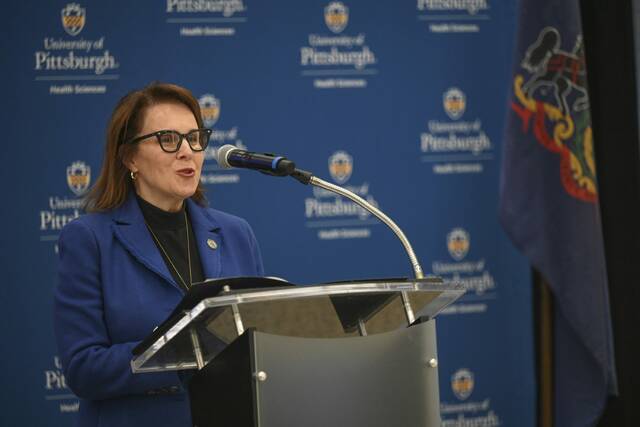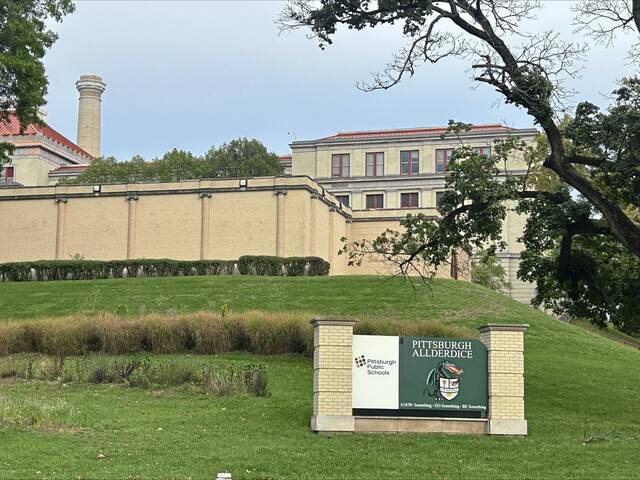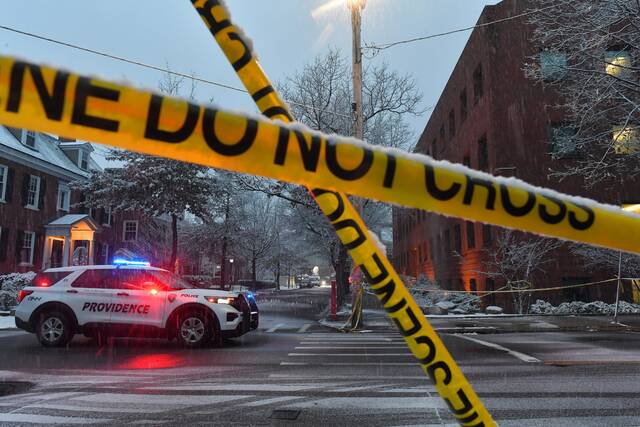Generations of Pittsburghers know it as an exquisite wedding and worship space, a limestone cathedral that has 23 imposing yet beautiful stained-glass windows and an organ with 4,272 pipes.
But that’s not what is drawing the most attention at the University of Pittsburgh’s Heinz Memorial Chapel these days. It’s the chapel’s narrow, 124-foot-tall spire, whose underlying steel structure is deteriorating and must be repaired and replaced. It’s now surrounded by scaffolding.
A panel of Pitt trustees voted Thursday to preserve the cherished piece of city history. It approved spending an estimated $11.5 million for work atop the neo-Gothic structure of Indiana limestone. The chapel was built and dedicated in 1938 as a gift to Pitt from the Heinz family on behalf of H.J. Heinz Co. founder Henry John Heinz, who wanted to honor his mother Anna Margaretta Heinz.
The chapel is dwarfed by its more famous campus neighbor, the 42-story Cathedral of Learning — the tallest classroom skyscraper in the Western Hemisphere and Pitt’s signature structure. It was finished two years earlier and also is made of Indiana limestone.
But to many on campus and beyond, the chapel also is central to Pitt’s traditions and to the memories of those who have celebrated and grieved in its rich oak pews. It is the site of 2,500 events annually that draw 65,000 people to concerts, classes and tours as well as worship and memorials.
“The administration is requesting authorization in the amount of $11.5 million to complete the required repairs to this irreplaceable treasure,” David DeJong, Pitt senior vice chancellor for business and operations, said before Thursday’s vote.
The trustees’ Property and Facilities Committee approved it unanimously.
The slender spire, or flèche, is now partly obscured by scaffolding erected around it. It stretches 124 feet skyward from its base and reaches 256 feet above the ground, according to the university.
Pitt officials did not provide a timetable Thursday for completing the project.
Workers will remove copper panels covering the structural steel and transport it off-site, according to paperwork with the resolution. Once there, it will be inspected and damaged or corroded parts will be repaired or replaced. The structural steel will be sandblasted, treated with epoxy coating to prevent corrosion and the slate roof will be replaced before scaffolding is removed and any damaged landscaping is restored.
The chapel is open daily except for university holidays and, when not in use, is a tranquil space for prayer and reflection. The chapel, whose carvings are of medieval tradition, have hosted various religious services, but the building belongs to no faith and was intended to be nonsectarian, according to a brochure available to visitors who enter.
All visible wood from the altar area to the entrance doors, each of them weighing 800 pounds, is made of oak. Insignias of a number of the world’s oldest colleges and universities are carved on shields on the building’s exterior, including its gables.
The cornerstone was laid in 1934. At the time, the late Pitt Chancellor John Bowman offered remarks saying that the structure would be a fitting center for worship that would rise from what was then a private institution that had been founded in 1787.
“The character, intensity, the level of that worship may change from generation to generation. The spiritual tide in men rises and fall,” Bowman was quoted as saying. “Through these changes, though, the chapel will stand, calm and undisturbed.”
Also Thursday, the Pitt committee:
- Authorized an estimated $6.6 million project for the School of Medicine, jointly with the Swanson School of Engineering, to develop a Magnetic Resonance Imaging suite within UPMC Presbyterian’s Magnetic Resonance Research Center.
- Authorized Pitt to negotiate and finalize a lease for new space in the SouthSide Box Office building, providing additional room for program expansion and student needs in the School of Health and Rehabilitation Sciences’ Department of Physical Therapy.








